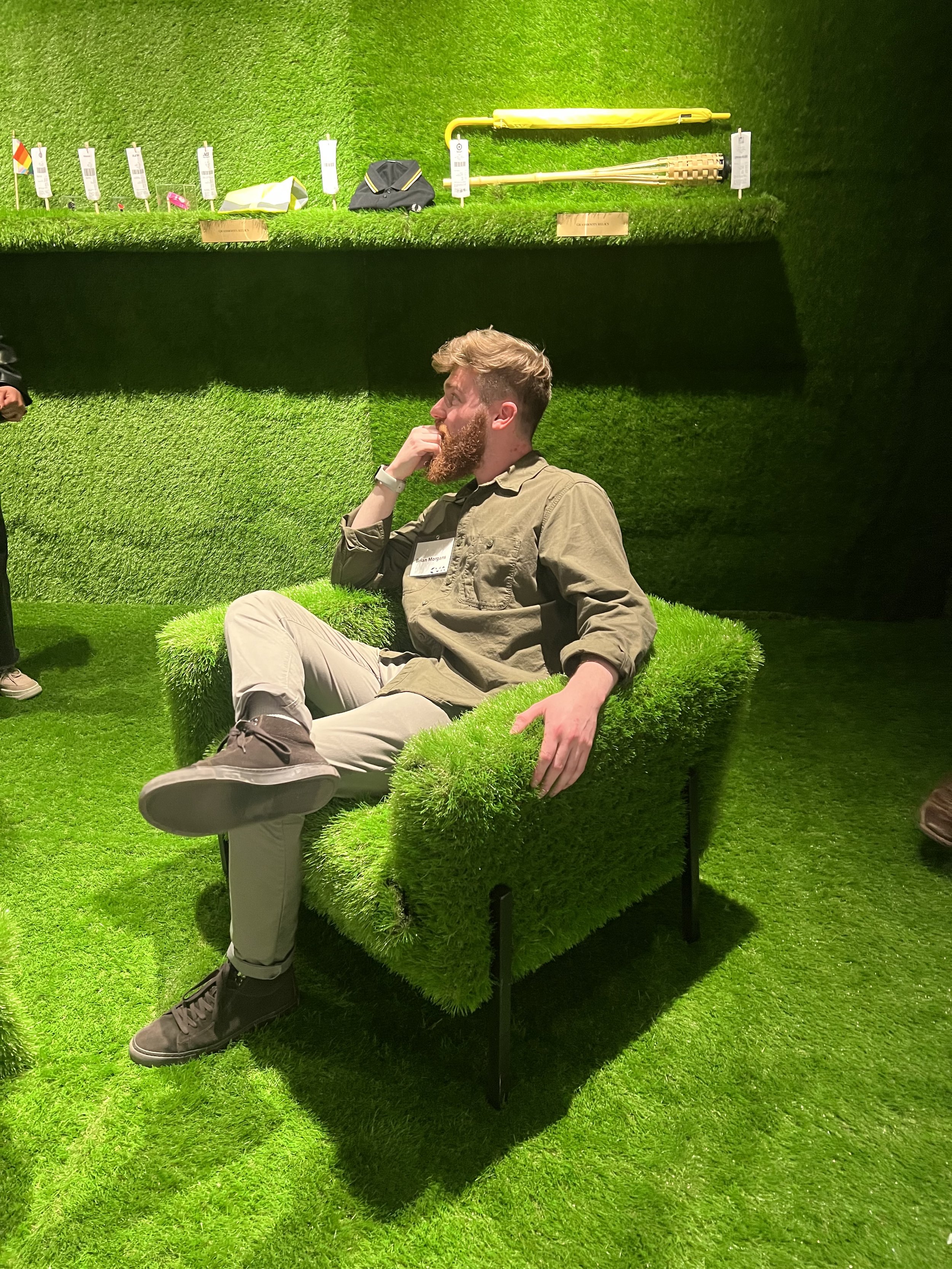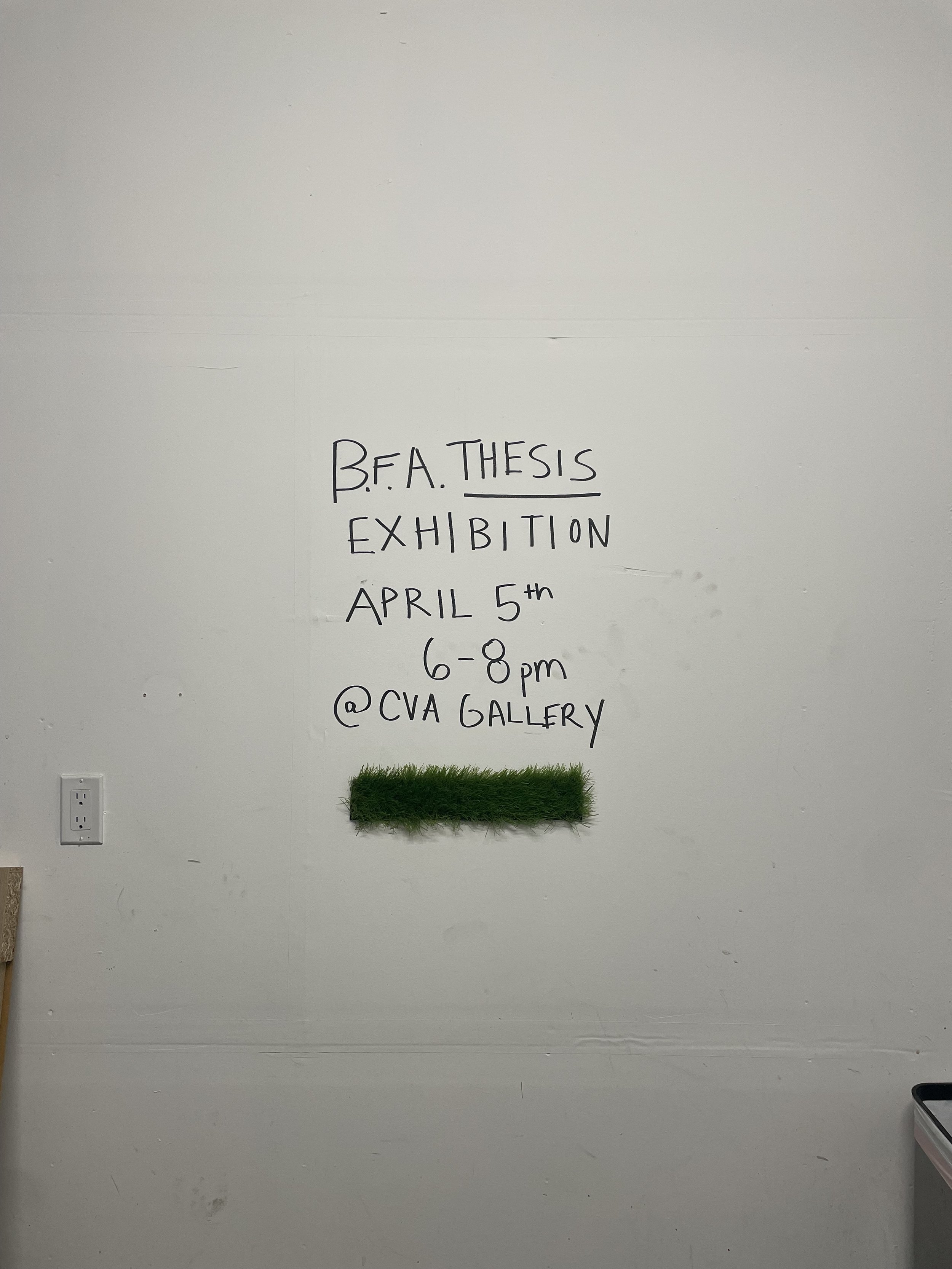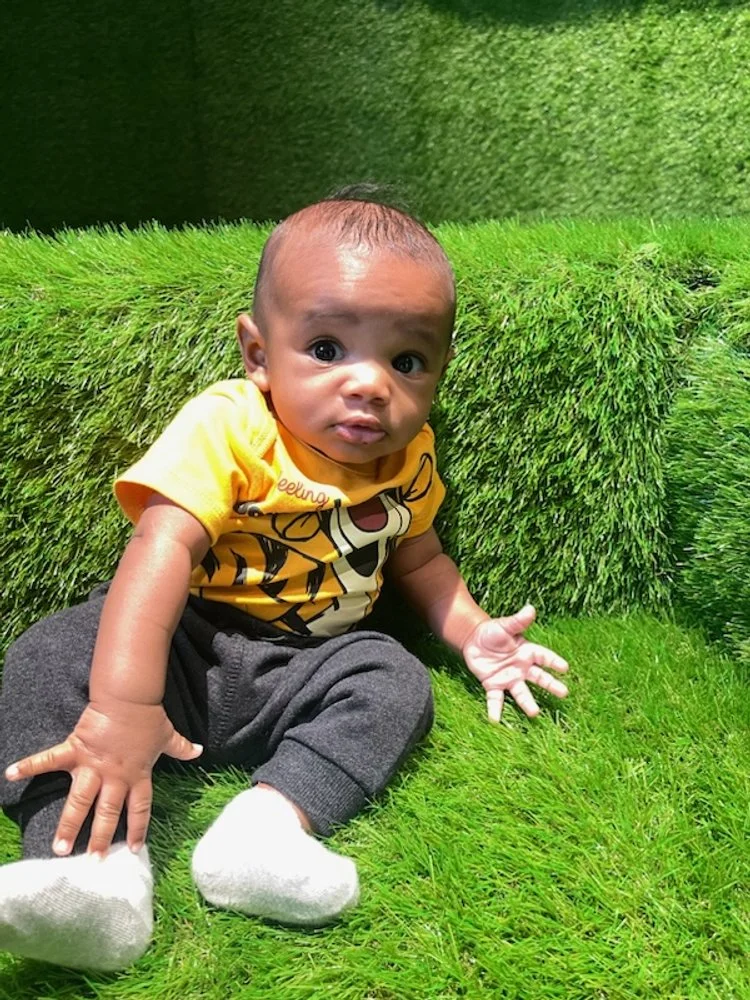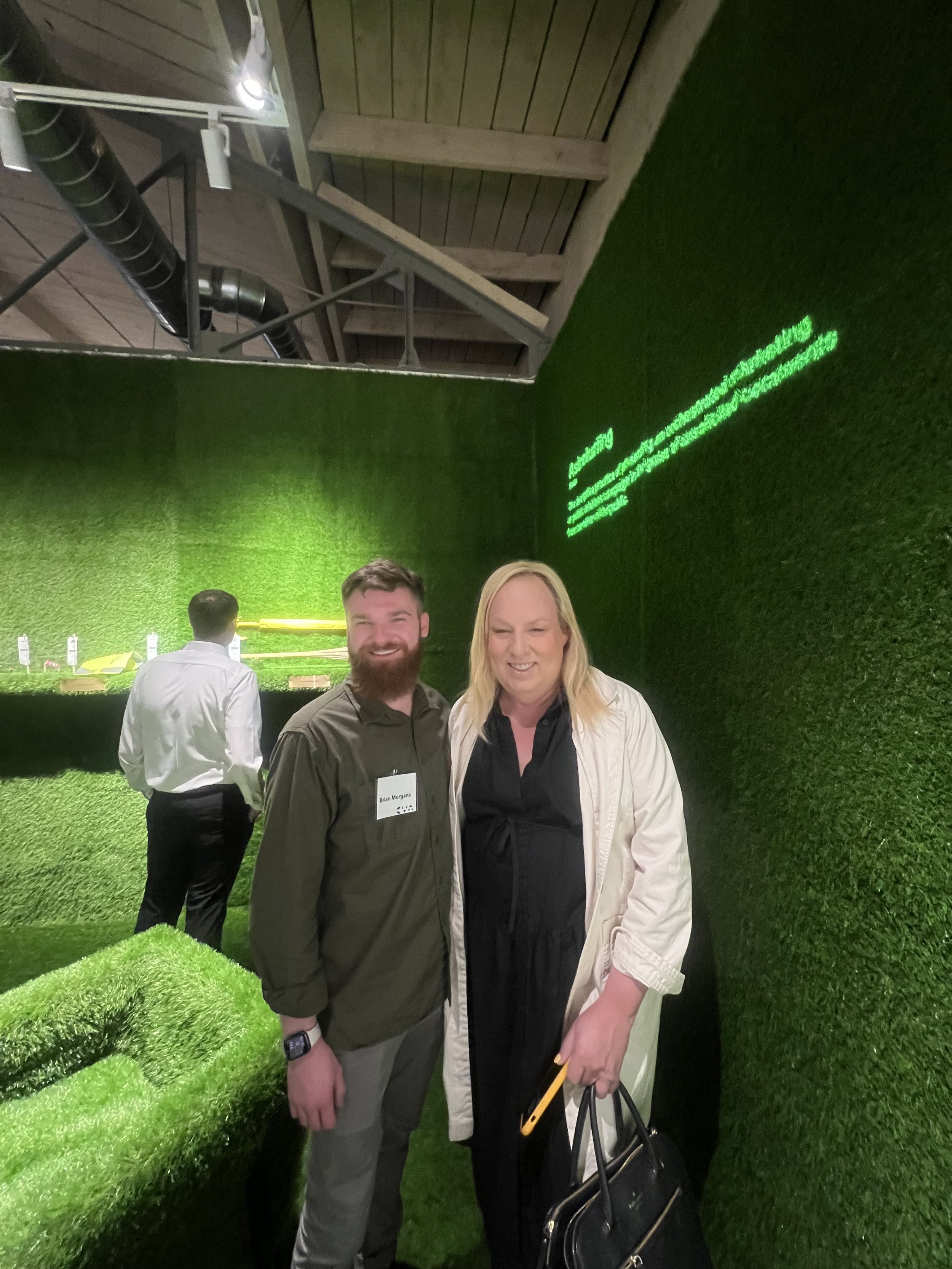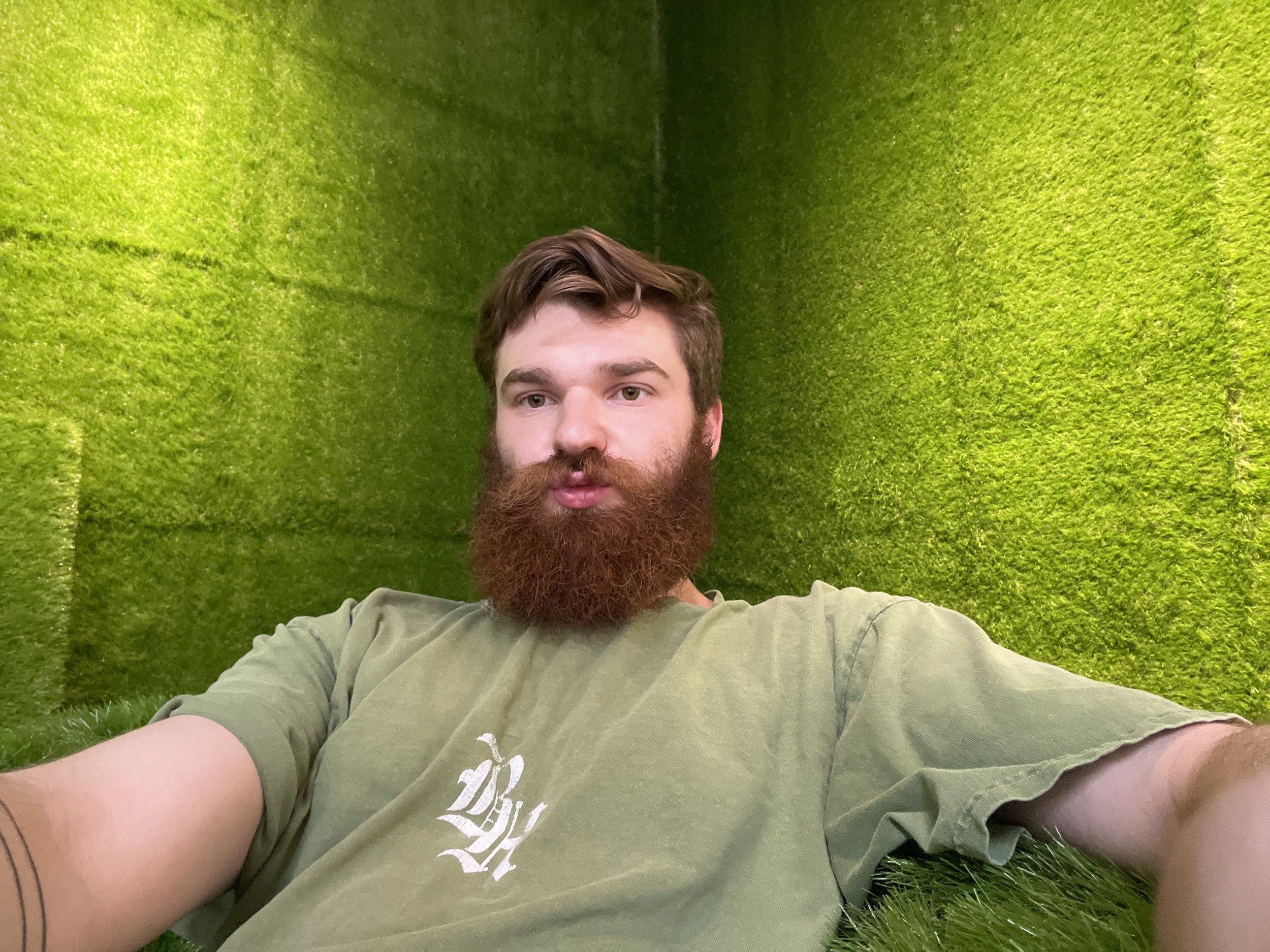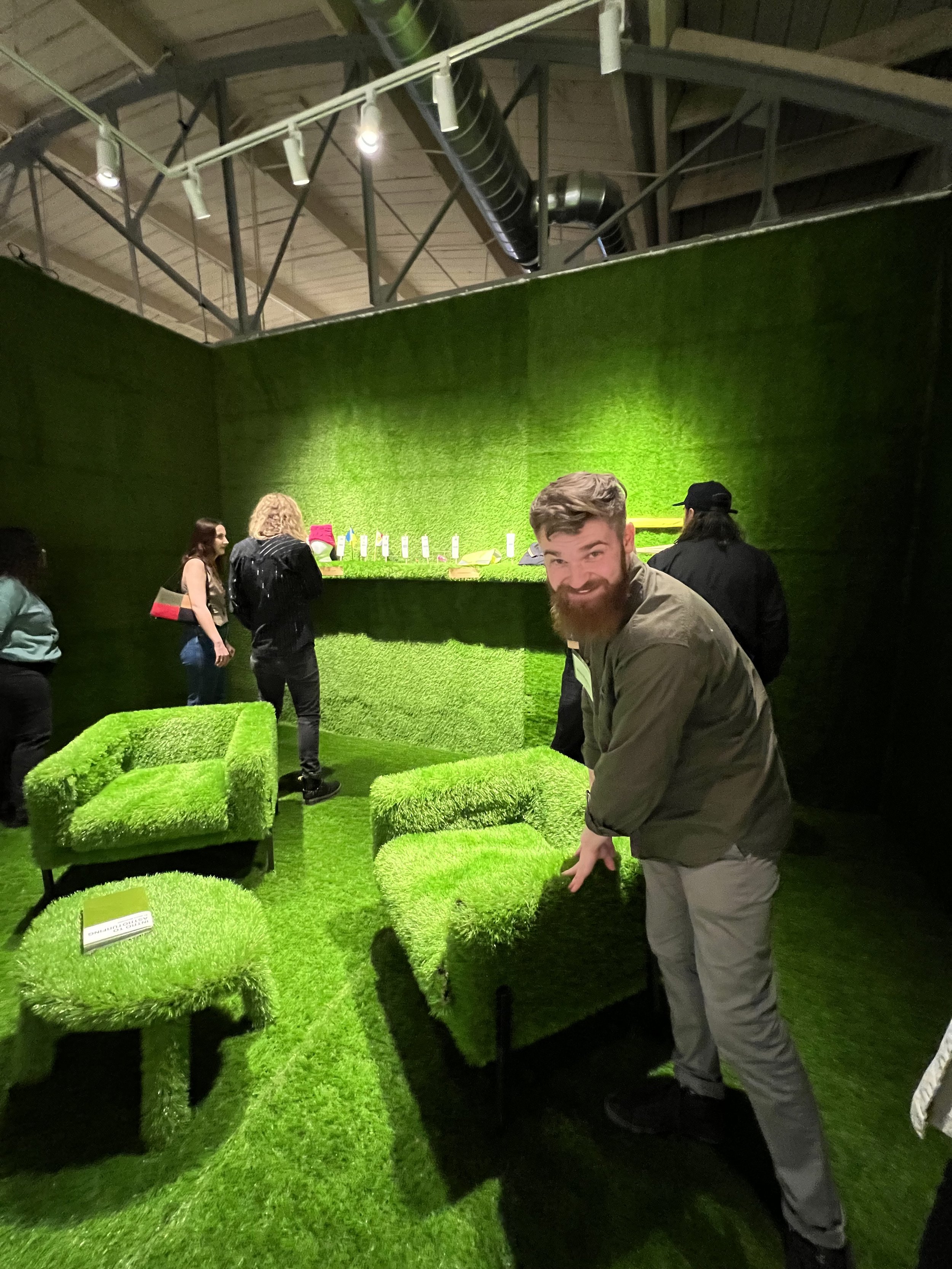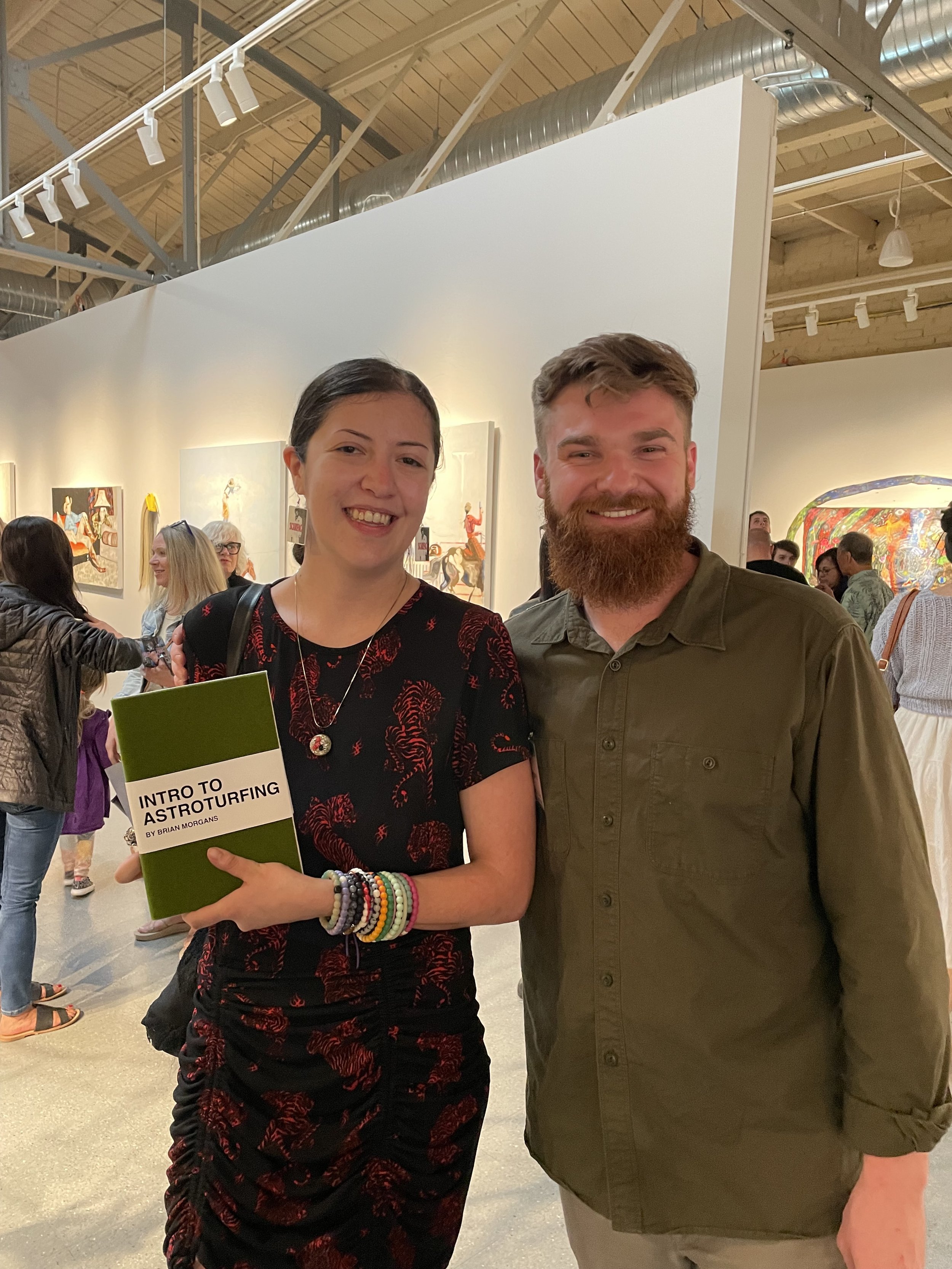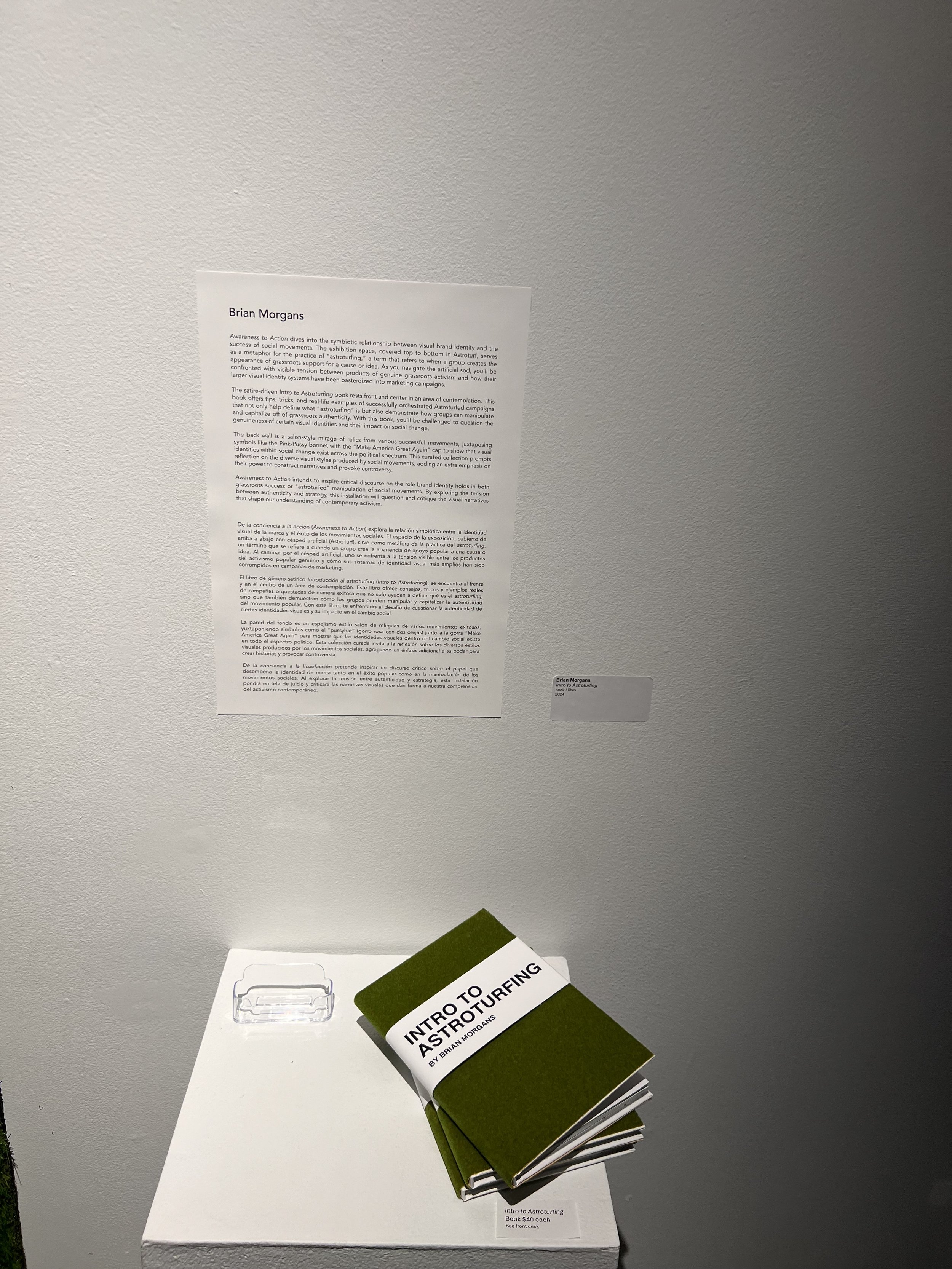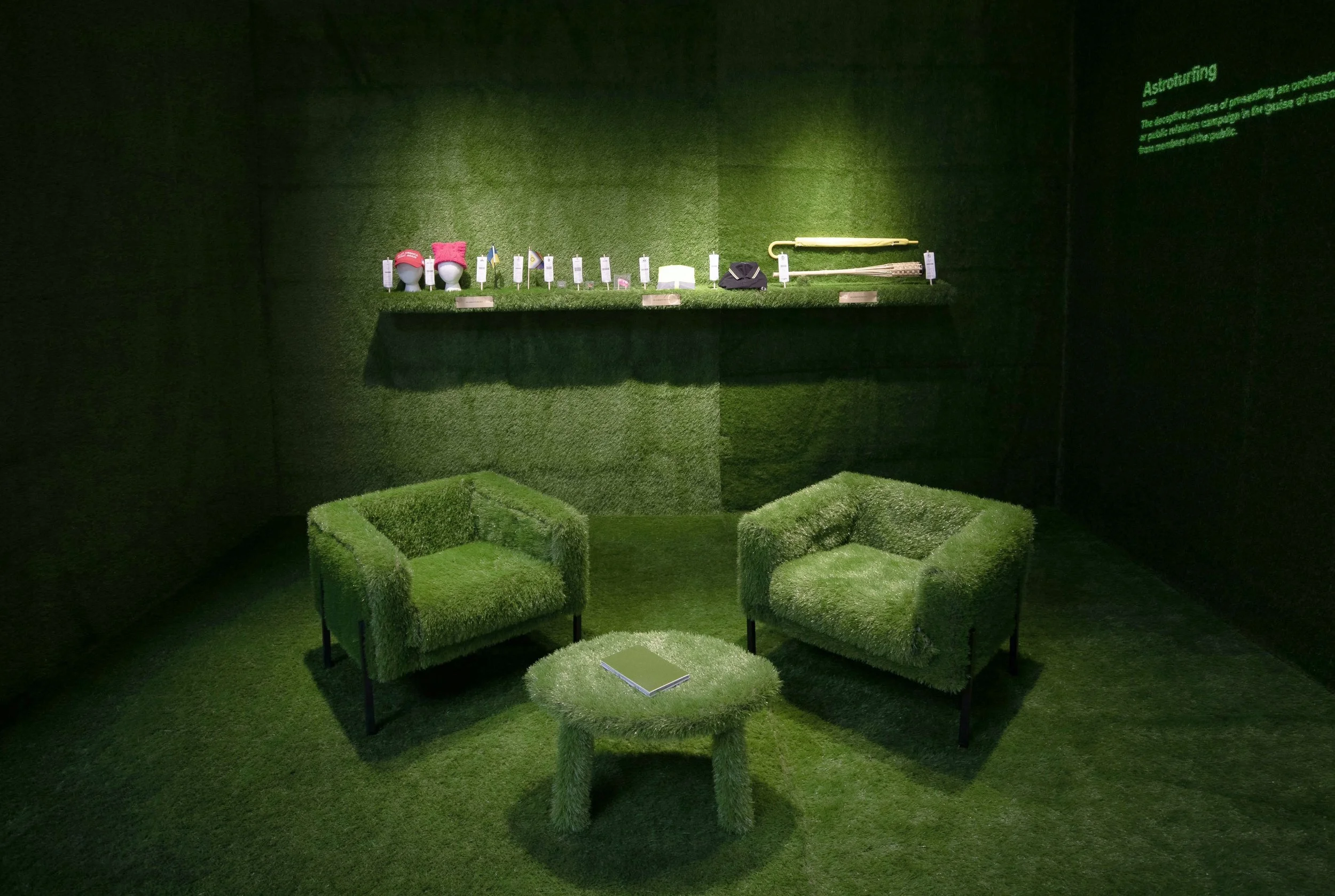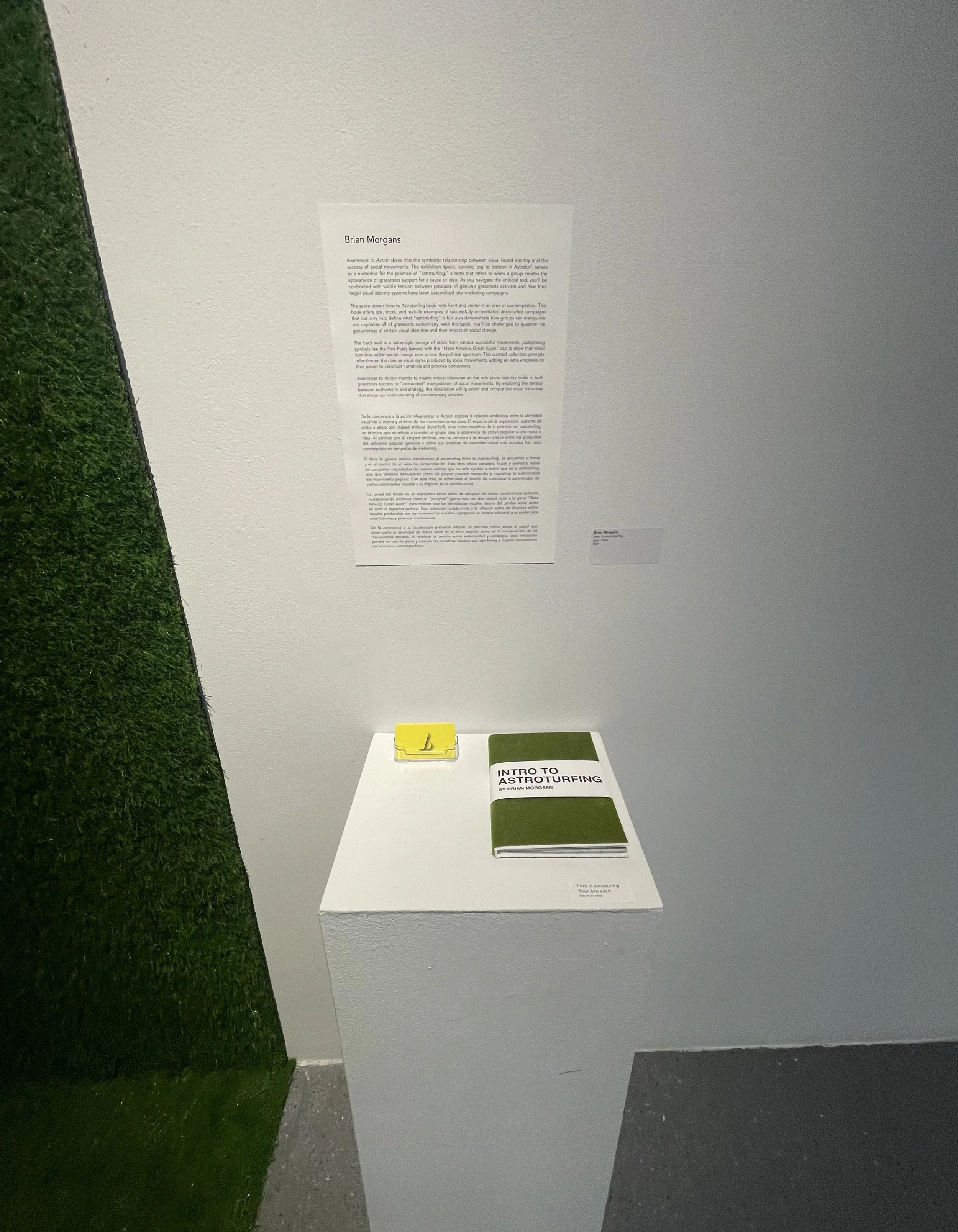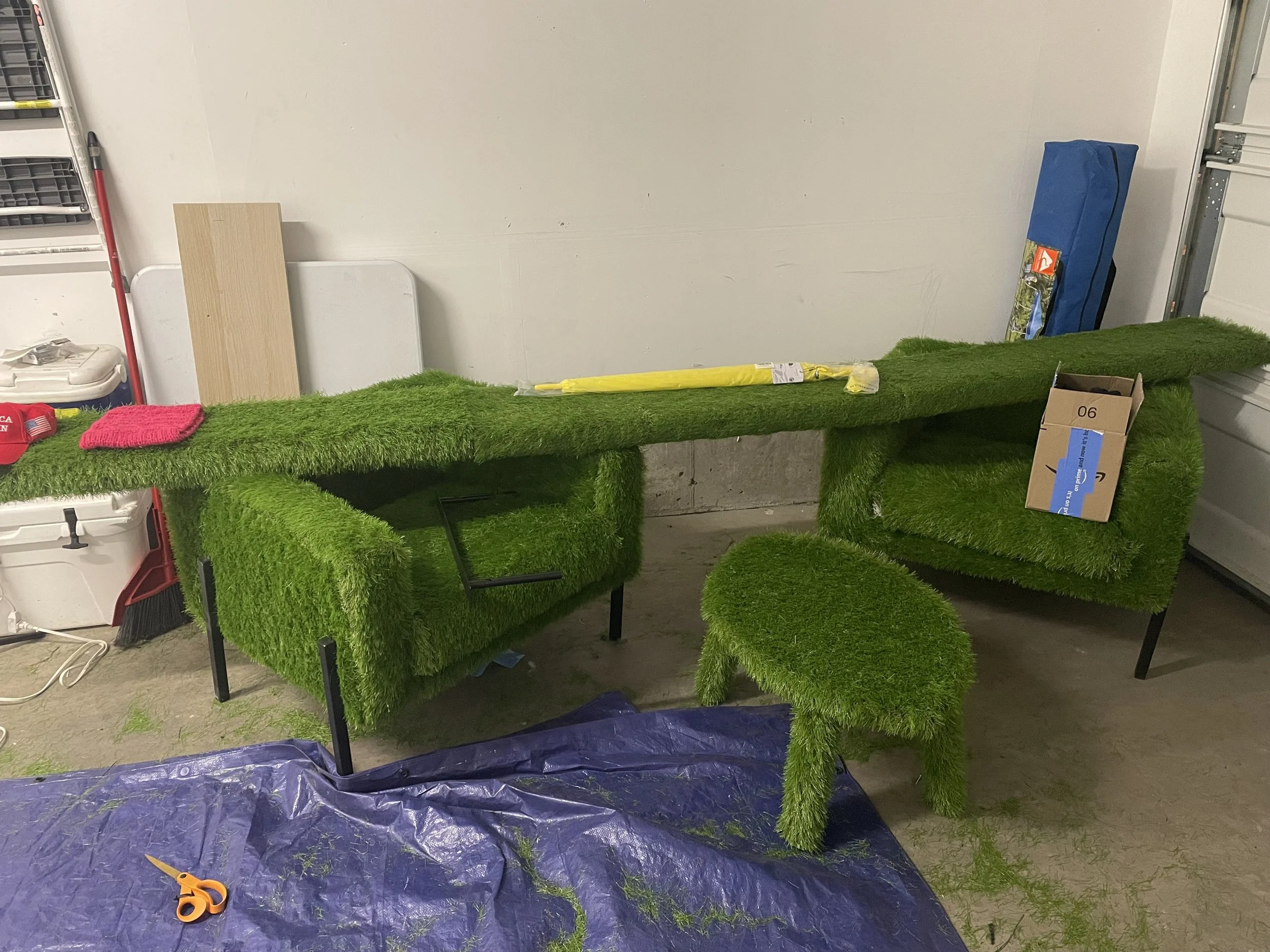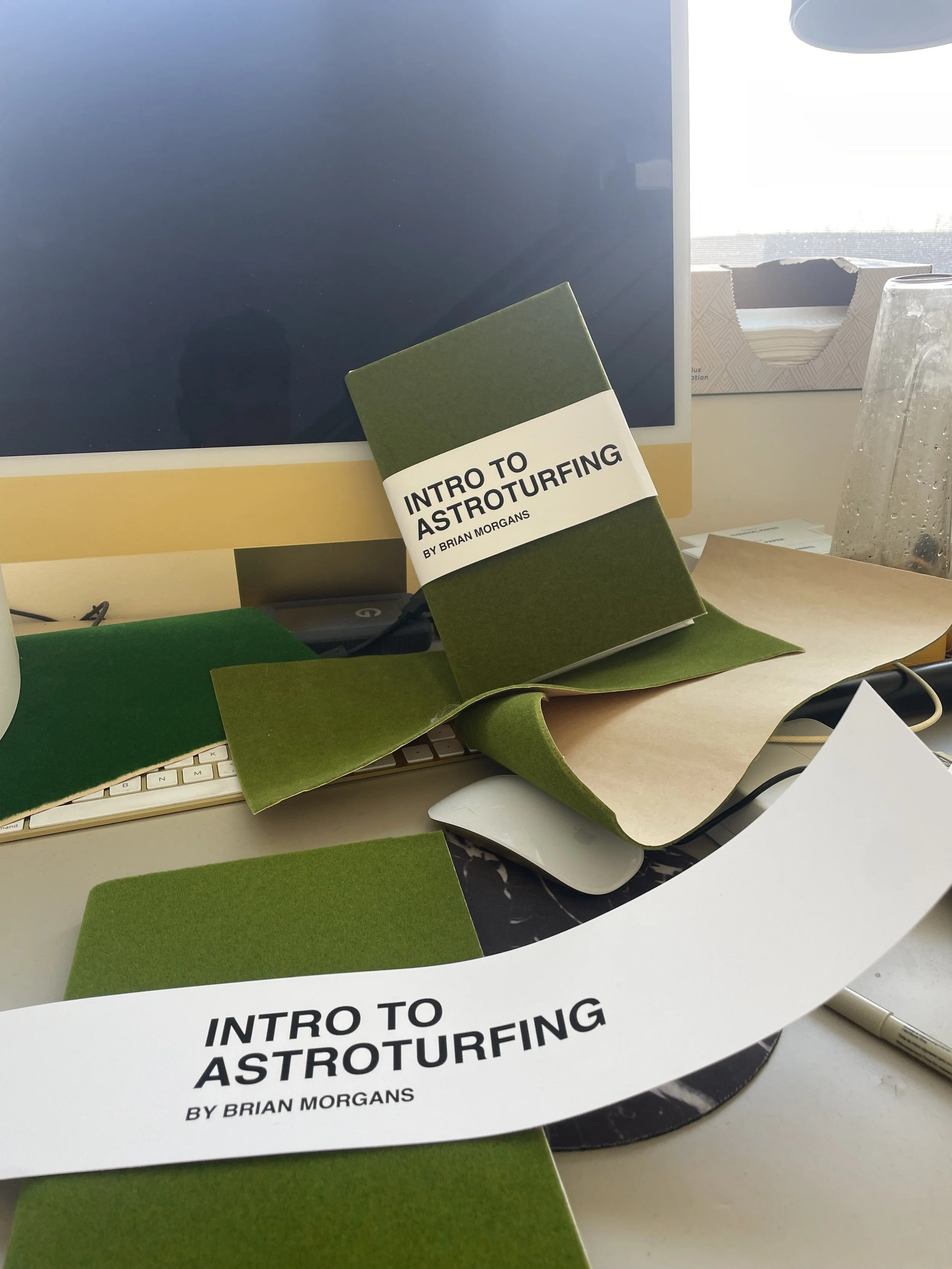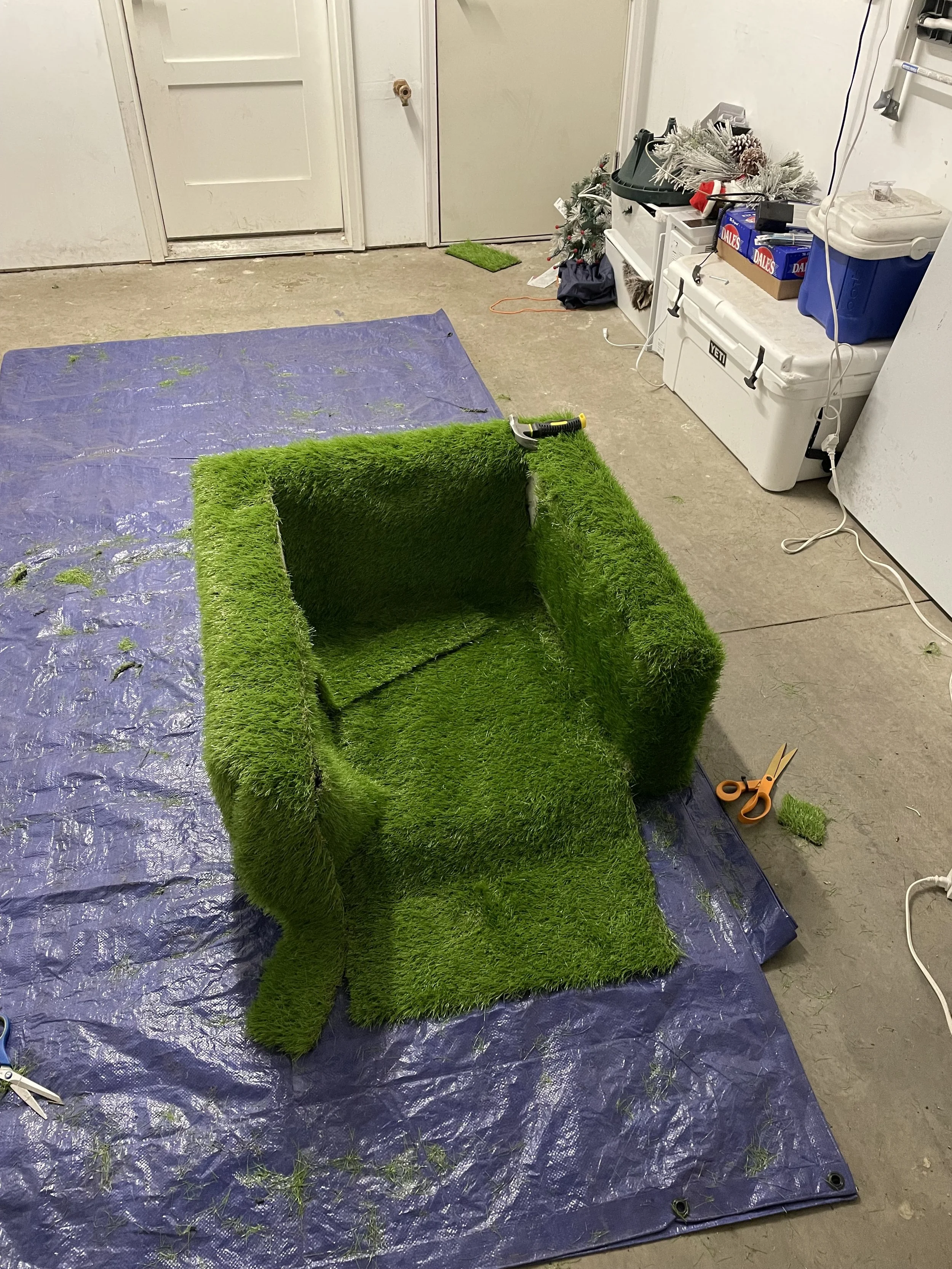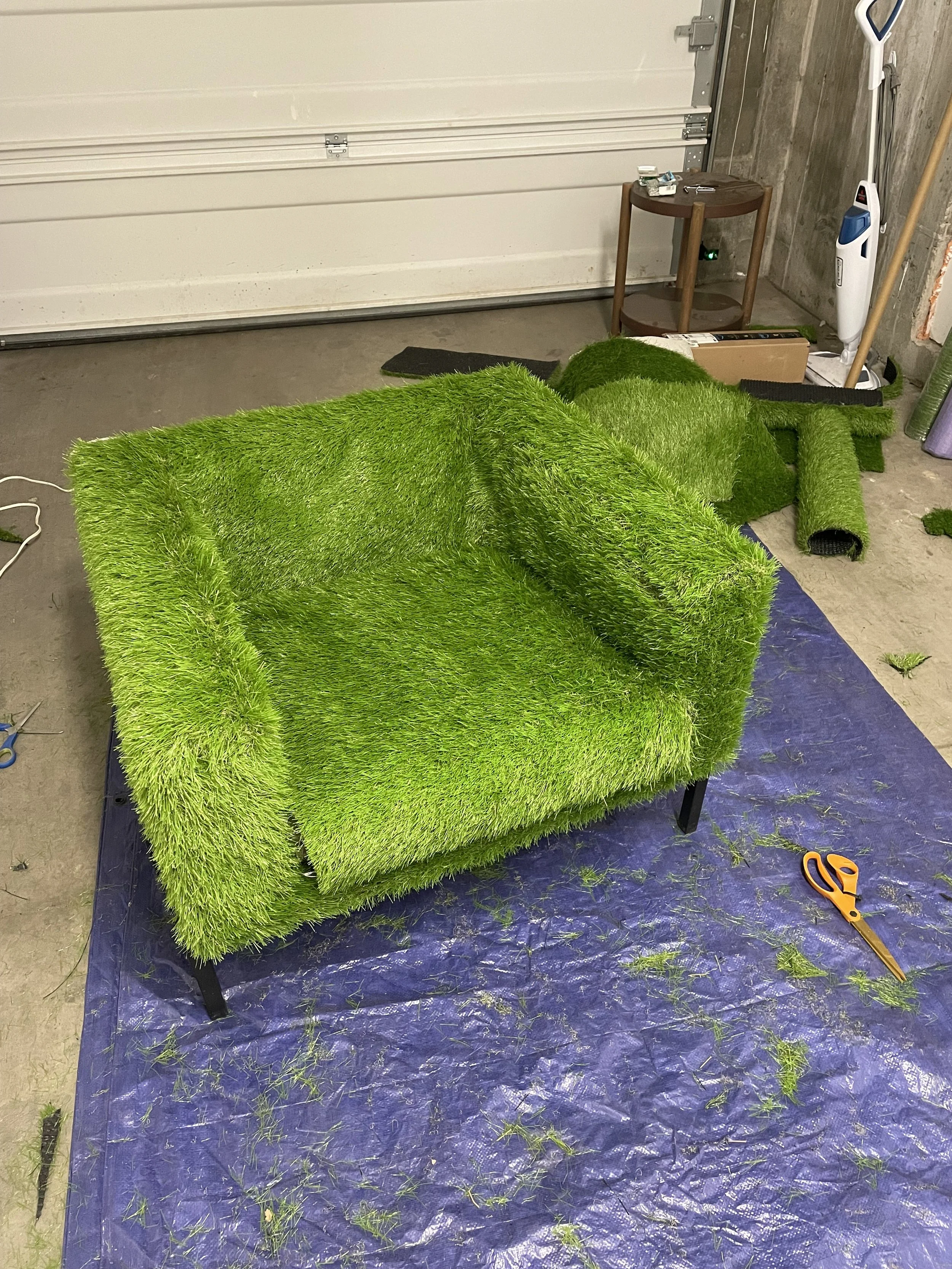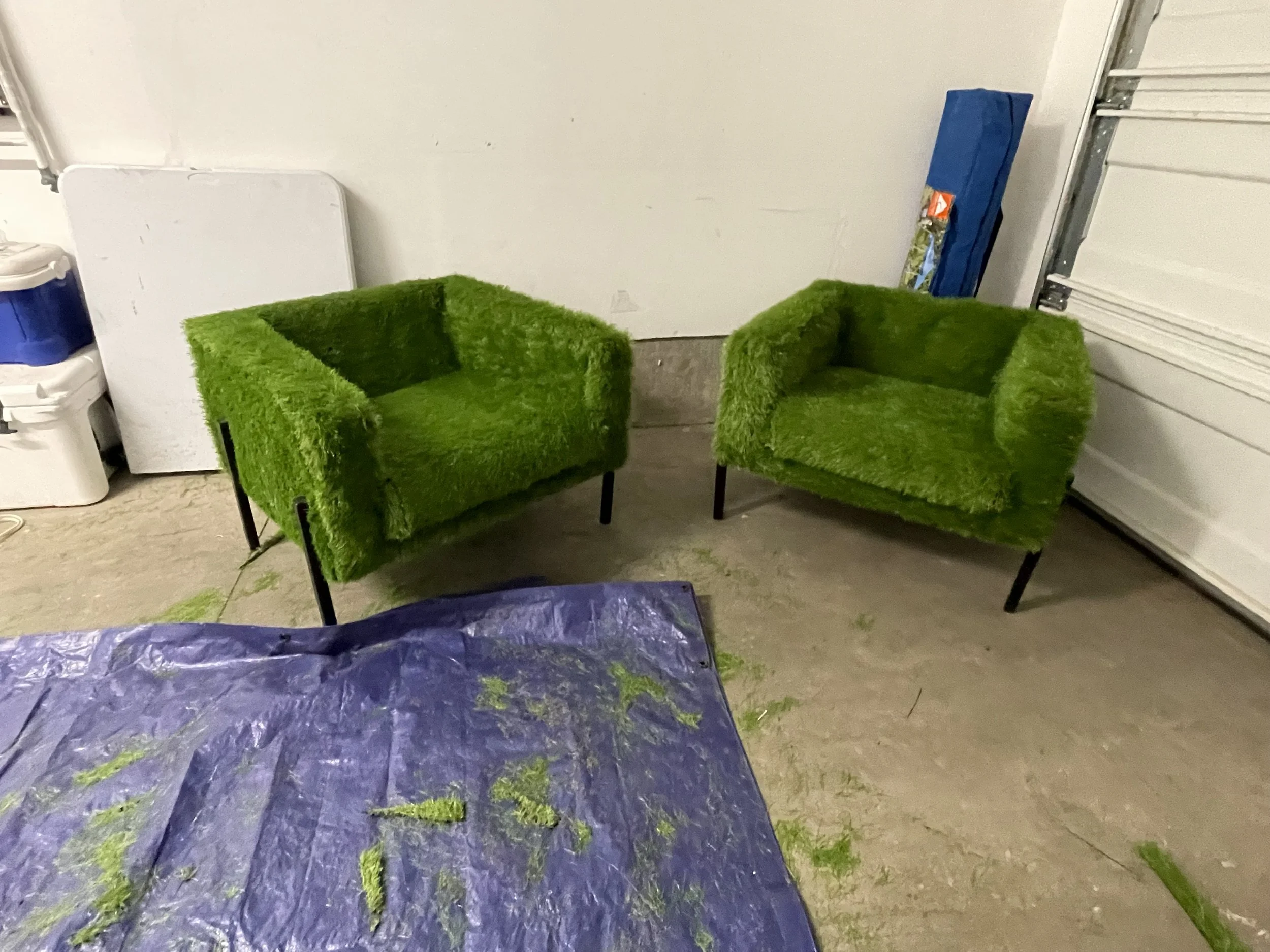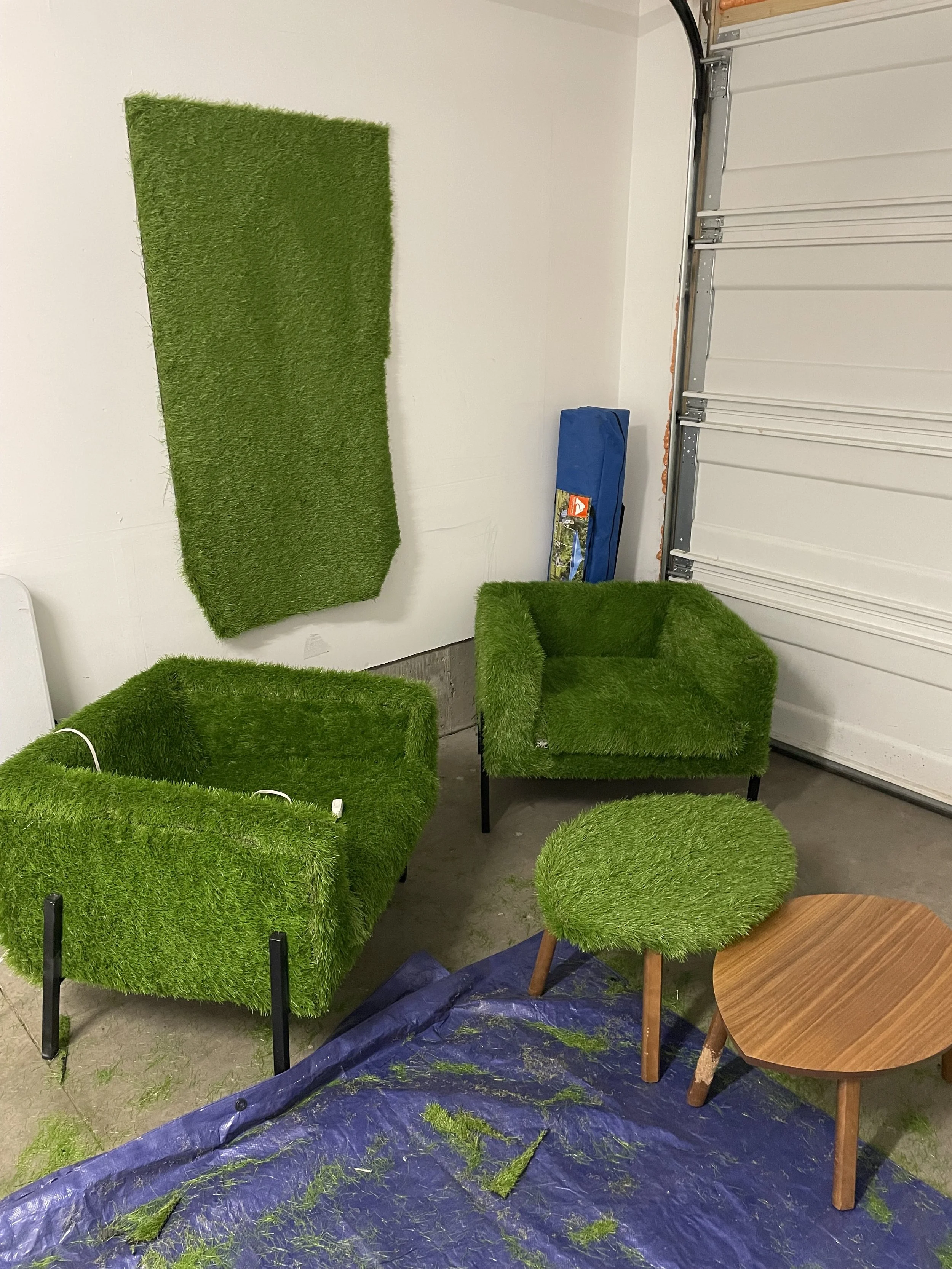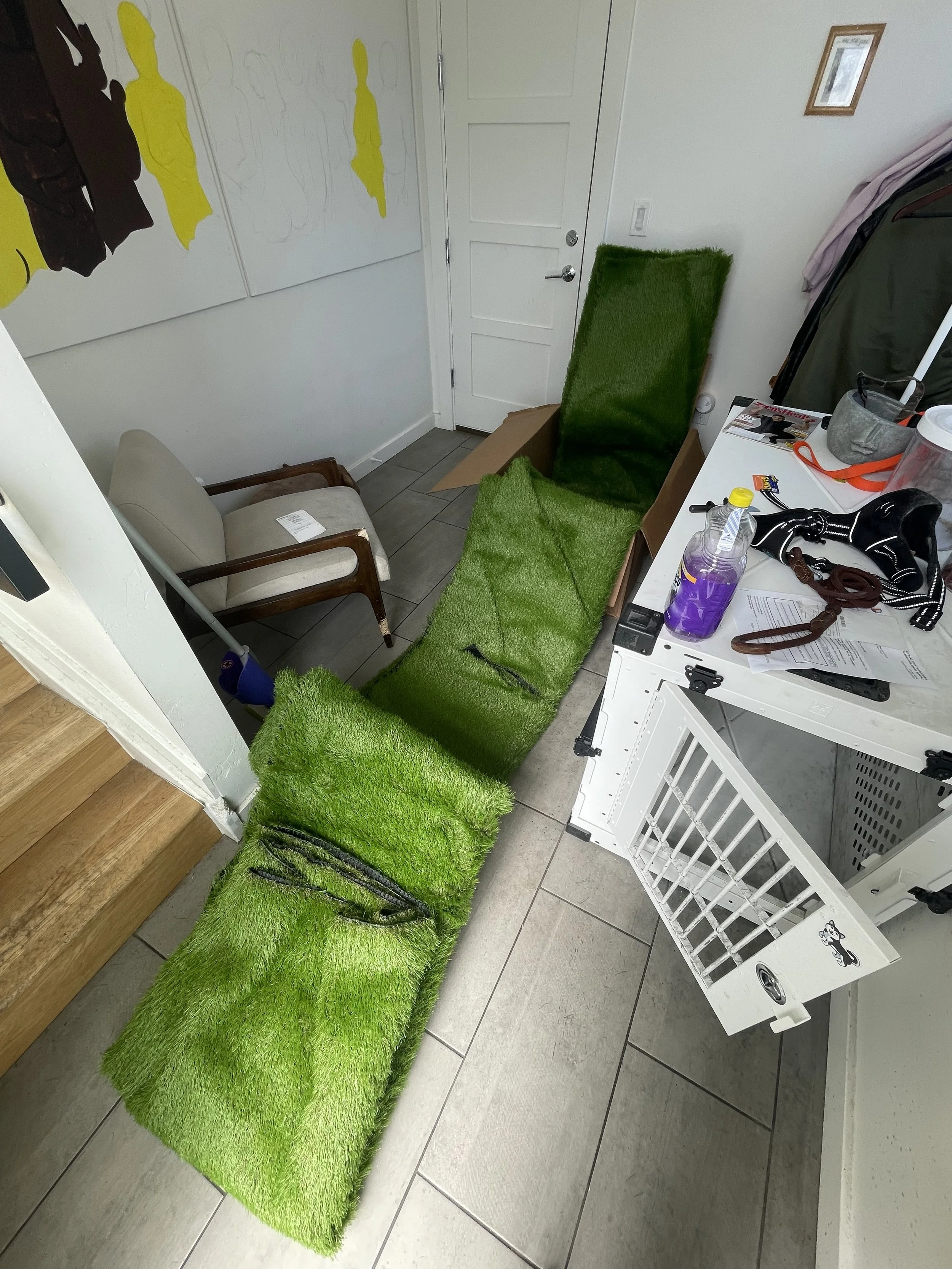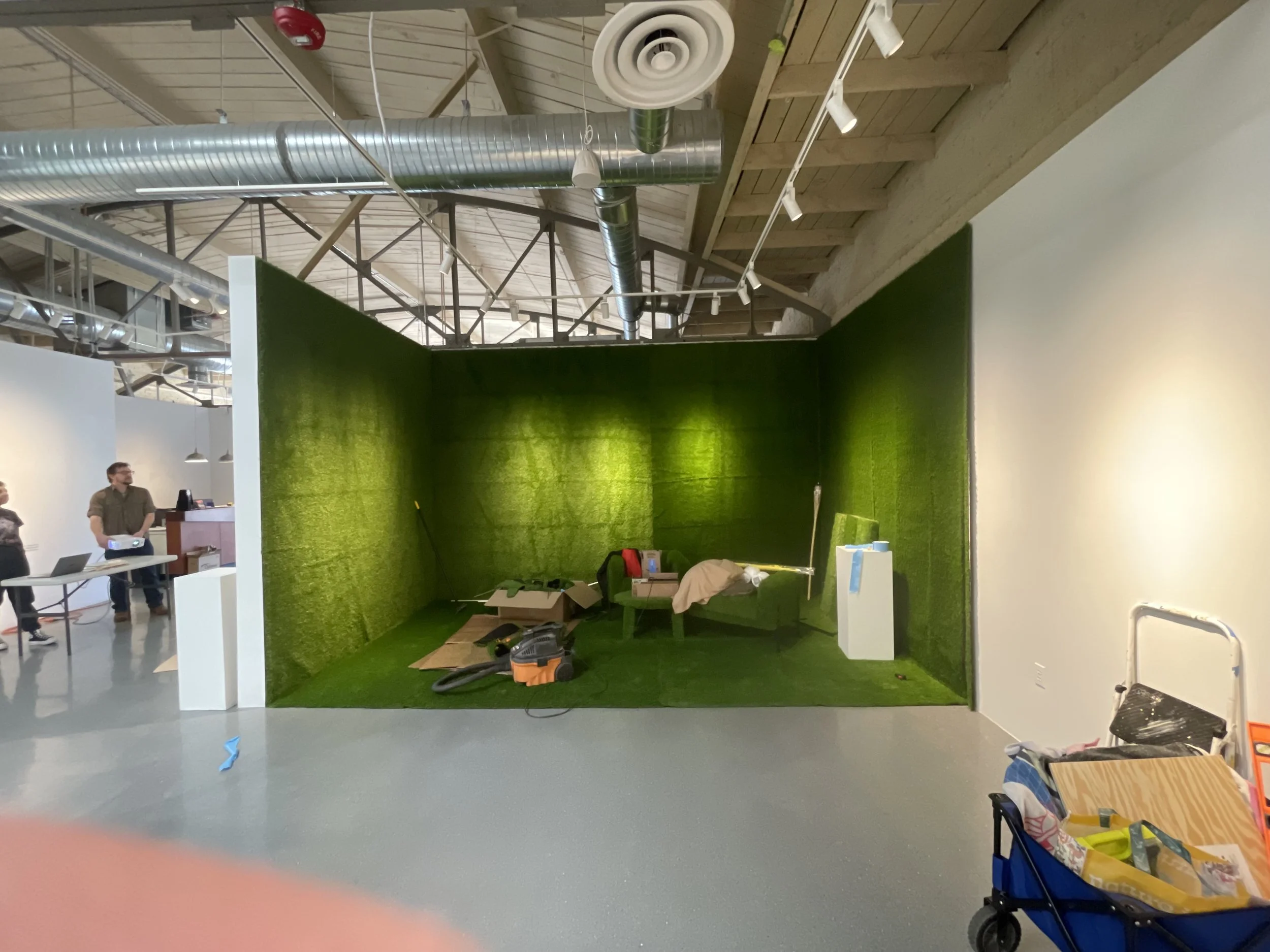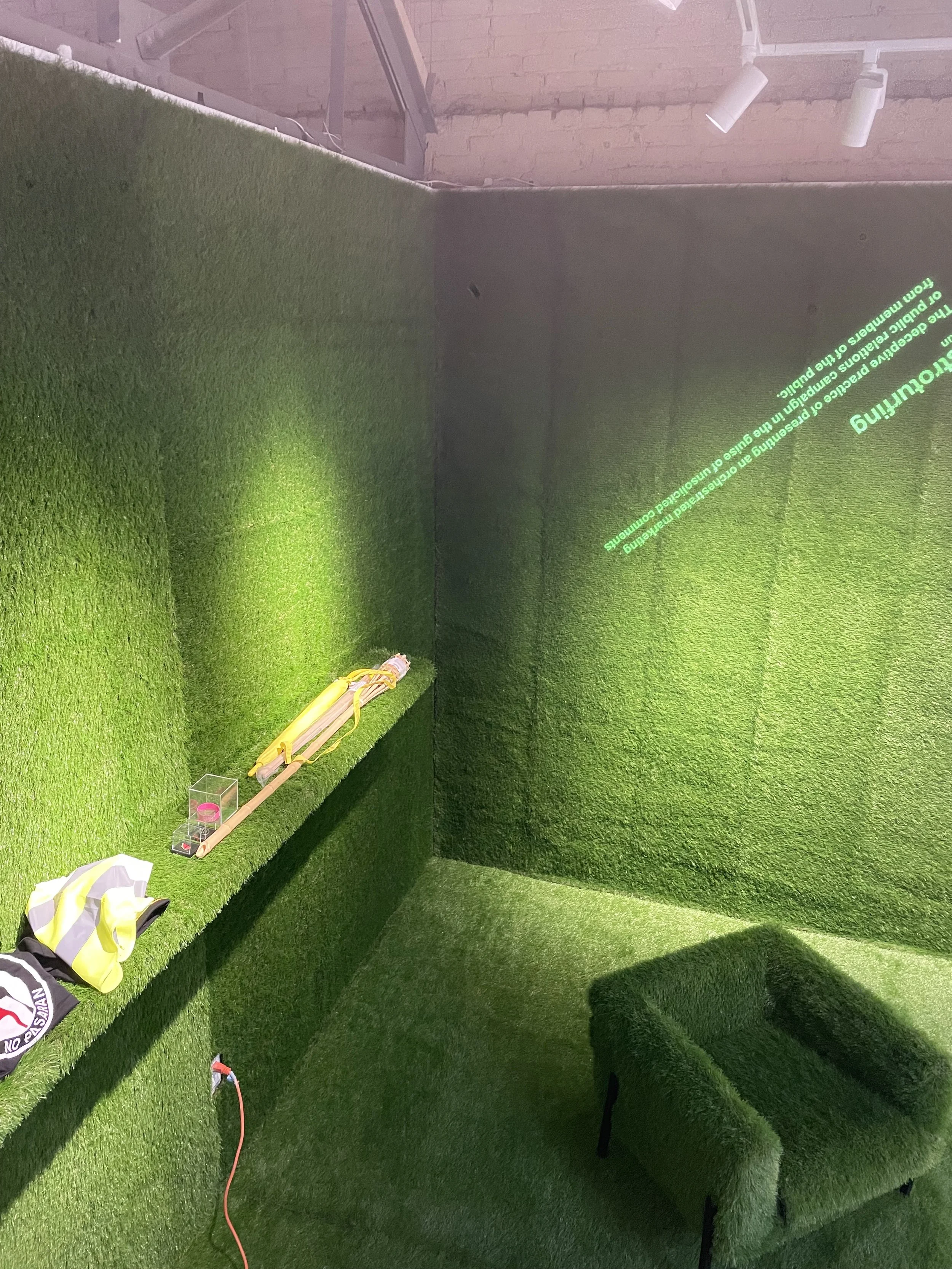Awareness to Action
BFA Thesis - 2024
E.G.D. and narrative design work together to access and analyze the impact that recognizable objects have on social change. With this exhibition, perspectives and relationships are challenged between grassroots movements and their visual brand identities.
Awareness to Action started with a question: How does brand identity affect the outcome and effectiveness of social movements?
Beginning my research, I quickly discovered that social movements, such as LGBTQ+, Black Lives Matter, and even Make America Great Again, had something in common: they all have visual brand identities.
Knowing their existence, I started recognizing these brand identities across the political spectrum. These socio-political signifiers surround movies, media, and day-to-day life.
I developed my approach to explaining socio-political visual brand identities by identifying the most relevant keywords for my project, selecting an appropriate theoretical framework, considering the necessary contextual backgrounds, and determining the best methods for sourcing information.
The keyword "influence" played a pivotal role in shaping the development of this project. Once the term "influence" came into focus, I started reflecting on the inherently manipulative nature of brand identity.
Brand identity serves to attract and satisfy consumers, playing a crucial role in the appeal and success of any product. Similarly, social movements may function in much the same way, leveraging their identity to garner support and drive engagement.
But what happens if that support and engagement is fabricated?
Astroturfing refers to the act of fabricating the appearance of public support for a cause, idea, or product. This practice involves individuals or organizations masking their efforts to make them appear as authentic grassroots movements, often aiming to sway opinions or influence decisions.
I explore this concept in greater depth in my book, Intro to Astroturfing.
The book is structured into three distinct sections. The first section delves into the concept of Astroturfing, providing real-world examples to illustrate how it works. The second section focuses on identifying key indicators to recognize potential Astroturfed campaigns or incidents. Finally, the third section presents examples of possible Astroturfing scenarios, along with a step-by-step guide on how they might be executed.
A large-scale exhibition was created to showcase the information and activate the space to accompany the book.
“Astroturfing” not only worked as a highly exploratory word but also as an audacious aesthetic.
I envisioned a scenario where someone, fixated on the socio-political concept of astroturfing, has entirely covered their space in artificial grass. As a satirical statement, they proudly showcase products bearing the branded identities of various social movements, each displayed alongside its purchase receipt. These items are labeled as "Grassroots Relics" on golden plaques, provoking the question of what, remains truly authentic in the identity of modern social movements.
fig. 05: Brand Support Chaos
fig. 07: Brand Identity in Detail
The process of bringing this work to fruition was time-consuming, labor-intensive, and costly.
I began with how I wanted the space to look and how it would communicate my thought process.
fig. 01: Mannequins Sketch
fig. 02: Hanging Sign Sketch
fig. 03: Branded Mannequins
fig. 04: Branded Mannequins w/ Sign
fig. 06: Astroturf Zen Garden
I started with some sketches, a simple idea of mannequins displaying the social movements’ brand identities on mannequins standing a top of astroturf.The idea developed into something more flashy, perhaps displaying a neon sign amongst the mannequins to help elaborate on the concept.After my concept was finalized, I began work on the physical fabrications and acquired the materials needed to execute the final product.
A digital drawing of the mannequins above the astroturf. A digital drawing of the mannequins above the astroturf with the potential flashy sign. A chaotic idea I had was to place cash machines next to mannequins, displaying the amount donated to specific movements. In this concept, political movements would compete against each other, highlighting the significance of brand identity in driving support.An idea to have an astroturf zen garden where viewers would rake out astroturf beads in patterns like a zen garden symbolizing the peace that's proposed with social change. One of the final concepts showcases the brand identities in detail an acitivates the three wall space as an mini-gallery. fig. 08: Astroturf Living Room
The final design I based the exhibition off of elminates the idea of mannequins all together and replaces the display of brand identities along the wall. This idea developed into to singel shelf that displayed the relics one by one alongside each other. fig. 09, 10, 11: Repurposed Furniture
I began to apolster chairs with astroturf. Each chair uses about 12 sq ft of material. fig. 12: Double Trouble
Opening Week, April 2024
I made two of them so people could enjoy the book in pairs. fig. 13, 14: Full Living Room Set
I also apolstered one small coffee table. This would later display the pile of books viewers could open and read in the exhibition. fig. 15: Shelving
I apolstered shelving as well, in the final exhibiiton, this will display the "Grassroots Relics."fig. 16: 600 sq ft of Astroturf
With the main structures in place, it was time to apply the Astroturf to the rest of the exhibition space. Covering approximately 600 square feet, the turf played a key role in tying the installation together, creating a cohesive and immersive environment. Careful attention was given to its placement, ensuring a seamless and well-integrated finish that enhanced the overall design.fig. 17: 100 Nails
The turf is secured with over 100 heavy duty takcs along with sports grade double sided tape to hold the floor pieces down. fig. 18: Mounting
I mounted the shelving with a floating bracketso they would blend perfectly into the space. fig. 16: Books
Between constructing the furniture and installing the physical exhibition, I printed the books that were sold in the space. The hardcover was laminated with faux grass to replicate the exhibition environment, while the label featured a heavy matte sleeve with raised lettering.